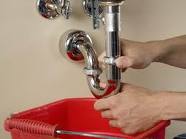I recently had some questions about several DIY products which might be suitable for miniature stone work. While there are products made just for artists, such as a variety of air dry clays, these are expensive, by comparison, and often unavailable.
Here is what I’ve learned…
Dry wall/joint compound or “mud”:
Paste-like material, used by building/construction contractors to fill in the seams between sheets of drywall...also called “sheet rock”. These sheets replaced plaster and lathe many years ago. This product is usually mixed at the site from a powder but is available pre-mixed in smaller quantities.
It takes at least 24 hours to fully dry. Can be sanded smooth or left sculpted for a textured look. Usually dries grayish white but can also be obtained with a pink tint for second coats after the first sanding. That helps the drywall guy find where he needs to do a second sanding after a re-coat.
This stuff has a lot of water in it and the substrate (especially paper-coated foam core board) can easily warp. It will also add weight to the project. You will need to paint this product unless you are going for a really rustic or aged look but it takes paint and washes and stains well.
Heavy duty or heavyweight vinyl spackling compound/paste:
Another paste-like material used by builders or DIY-ers for major repairs to drywall or sheetrock. By major repair, I mean a large hole or crack in the wall. This product dries slowly also and requires several applications to fill the hole. It has a consistency similar to the drywall mud (almost like peanut butter without the stickiness…). It also dries to a grayish white; it can be sanded and painted. I have never seen this product in powder form but it is available in a variety of pre-mixed quantities and stays soft if kept air-tight.
Both the joint compound and vinyl spackle can be sculpted into brick and stone after they have set up awhile, using the usual tools. Both can be textured, sanded, painted and stained. Both can be pre-tinted with small amounts of acrylic paint. Both products will add weight to your project…which is the biggest downside. Both products can crack if they dry too fast or are applied too thickly…or if the project crashes to the floor…
Light duty or lightweight spackling compound/paste:
This product is used to make small repairs to drywall. A “small” repair would be filling in nail holes from pictures or a dent.
This product has the consistency of buttercream frosting. It is very light and airy.
It can be pressed into place with your fingers or smoothed with a variety of tools. It does not require sanding. I use a palette knife or old credit card to texture it.
It is pure white and dries pure white but can be colored with powdered tempera paint. Adding liquid paint can thin it too much. However, since the product can be revitalized with a small amount of water if it becomes too stiff, adding paint shouldn’t be a problem if one is careful. It dries very quickly and can be painted within a few hours. I have only seen it available pre-mixed in the US. Storing in an air-tight container keeps it soft and spreadable.
I don’t think this product would sculpt into bricks very well but it makes a great “plaster” or “stucco” wall and grout for mini tiles or bricks. One of the pluses is that it doesn’t add much weight at all to a project. And that’s a big plus. It also doesn’t seem to crack…at least not in my experience.
CAUTION: NEVER wash any this stuff down your sink…ever! Unless you are a plumber or a close friend of one.
After wiping your tools with paper towel, wash them in a large bucket of warm water and discard water outdoors. Wear gloves as it will dry out your hands.
Regarding warping. All these products contain a lot of water and when they dry, the water has to go somewhere. Some of it evaporates outward but some also soaks into the substrate. I always seal both sides of the substrate with something before I apply these products. Most times I used white glue. It doesn’t always prevent warping but it sure makes it less than if it wasn’t sealed. The only thing I’ve not observed to warp is ½ inch polystyrene.
So take a trip to the hardware store and look around. You never know what you’ll find!
Tabitha






